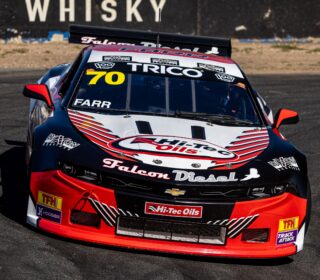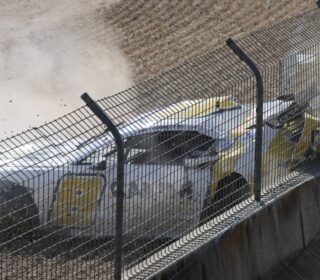SIMPLIFY, THEN ADD LIGHTNESS

COLIN CHAPMAN once famously said of his Lotus road and race cars, ‘Simplify, then add lightness’.
It was the idea on which his company was founded: using the least amount of parts to achieve the best possible performance.
Which leads me to think that perhaps it’s time to take the Chapman philosophy on the rule book that governs our sport, too.
While there was a widely reported shuffle of the Supercars judicial system before the season started, events on Saturday at Phillip Island are proof that there’s still much to do to tune up the rules and regulations that shape the sport.
And this isn’t about tyres – It’s about a white line on pit lane that caused more confusion than a whole lot of tyre’s blowing up.
When Neil Crompton and Mark Skaife, both intelligent and educated motor racing experts, sit in the broadcast box audibly voicing their confusion to a national audience about the string of penalties that blighted Saturday’s race it is clear things have to change.
The argument is not the breech of regulations that occurred by drivers crossing the broken line that delineates the working and fast lane in the pits: the bulletin was there, clear for all to see and, as documented in the broadcast, signed for by team managers.
The issue is the fact that it is an issue at all.
So if DJR Team Penske didn’t tell Scott McLaughlin that he needed to avoid the broken line because of that bulletin, then absolutely the penalty is valid and on their head be it.
But really, should he have even been penalised for such a trivial thing at all?
Now, if we had a full grid and every metre of the 40km/hr zone was in use for pit stops, there would absolutely be an argument to protect teams working in that part of the lane from cars entering the pits.
But there wasn’t. The Western end of Pit Lane was used by Super 2 Series teams and they accessed them from the rear of the garage building rather than the front – Those garage doors remained firmly shut all weekend and that end of the lane was deserted.
Instead we managed to engineer a situation where the sport looks pretty silly because the results were changed by people crossing a painted white dashed line by a metre, or not.
And I use the term ‘we’ because this isn’t a jab at the officials of the day, nor the series or those who run it. This is a big-picture whole of the sport issue.
Imagine if you were tuning in as a casual viewer and heard Tim Schenken on the radio telling half the field they were being penalised for crossing a painted line.. You’d have no idea what on earth was going on and think motor racing was mad. And you’d be right.
(As an aside, it begs the question: why not put a cone there in the first place rather than reacting to an issue a day late? Removing the issue before it becomes one seems like a sensible idea but I digress.)
Of course, it’s easy to sit on the lounge a few days later and pontificate about people who have an extremely challenging job and this is absolutely not a slight on them.
What it is, is an opportunity to open a discussion about the way the sport is regulated – because those regulations shape the racing and the racing ultimately shapes the TV product and the fans involvement.
And when the TV commentators, who have a lot more information on hand that the punters sitting at home, sit there scratching their heads wondering what on earth is occurring it’s a bad look.
The AFL is battling a similar issue surrounding the way the game is umpired this year and it’s caused all kinds of discussion amongst the footy media and fans. A lot of it has been negative but the AFL is big enough to be able to sustain it.
Our sport, on the other hand, can’t afford to have that kind of an issue because we need to do everything to engage more people.
Making an already complicated sport simple to understand and explain is an enormous part of that and on Saturday, we failed as a sport to do that.
Hopefully this is an opportunity to go all Colin Chapman on the rules and get rid of elements of the rule book that create scenarios like the ones that occurred on Saturday.
Because when Craig Lowndes crosses the line first but doesn’t win because of a penalty for crossing a painted line it is not a good look.
It’s never as easy as it sounds, but it must be time to ‘remove rules and add simplicity’ before we over regulate our game even more.
(And that’s before we talk about rubber.. Or pit-lane stacking..)
WORDS: Richard Craill
IMAGE: Dirk Klynsmith







